
Class 8 Science Chapter 1 Extra Questions Mcq Barbara Johnston's 8th Grade Math Worksheets
Question 6. Give an example of chemical effect of the electric current. Answer: The passage of an electric current through a conducting solution causes chemical reactions as a result, bubbles of a gas are formed, or deposits of metal are seen on electrodes or changes in colour of solution , may occur. These are some of the chemical effects of.

NCERT Solutions Class 8 Science Chapter 14 Chemical Effects Of Electric Current (2022)
Significance of CBSE Class 8 Science Important Questions with Answers PDF. There are 18 chapters included in the Class 8 Science syllabus that covers vivid topics related to pollution, astronomy, light, natural phenomena, sound, force, friction, etc. These chapters need the highest attention from the students to complete preparing the syllabus.

Class 8 science force and pressure extra questions Brainly.in
Here you will get NCERT Solutions for Class 8 Science Chapter 14 Chemical Effects of Electric Current are helpful in building a great foundation of concepts and make easy for the students to understand basics. It will develop logical perspective of students and they will be more scientific while answering a question. You will get step by step and to the points answers of every question given.

Cbse Class 8 Chapter 11 Science, Ch 2 Maths Class 10 Mcq 02
Chapter 8 - Cell - Structure And functions Chapter 9 - Reproduction In Animals Chapter 10 - Reaching The Age of Adolescence Chapter 11 - Force And Pressure Chapter 12 - Friction Chapter 13 - Sound Chapter 14 - Chemical Effect of Electric Current Chapter 15 - Some Natural Phenomena Chapter 16 - Light Chapter 17 - Stars And Solar System

NCERT Exemplar Class 8 Science Solutions Chapter 14 Chemical Effects of Electric Current (2022)
Answer: The deflection in magnetic needle shows that the circuit is complete and the solution conducts electricity, i.e., it is a good conductor. Question 3. Name three liquids, which when tested in the manner shown in Fig. 14.5. may cause the magnetic needle to deflect. Answer: Vinegar, lemon juice and tap water. Question 4.
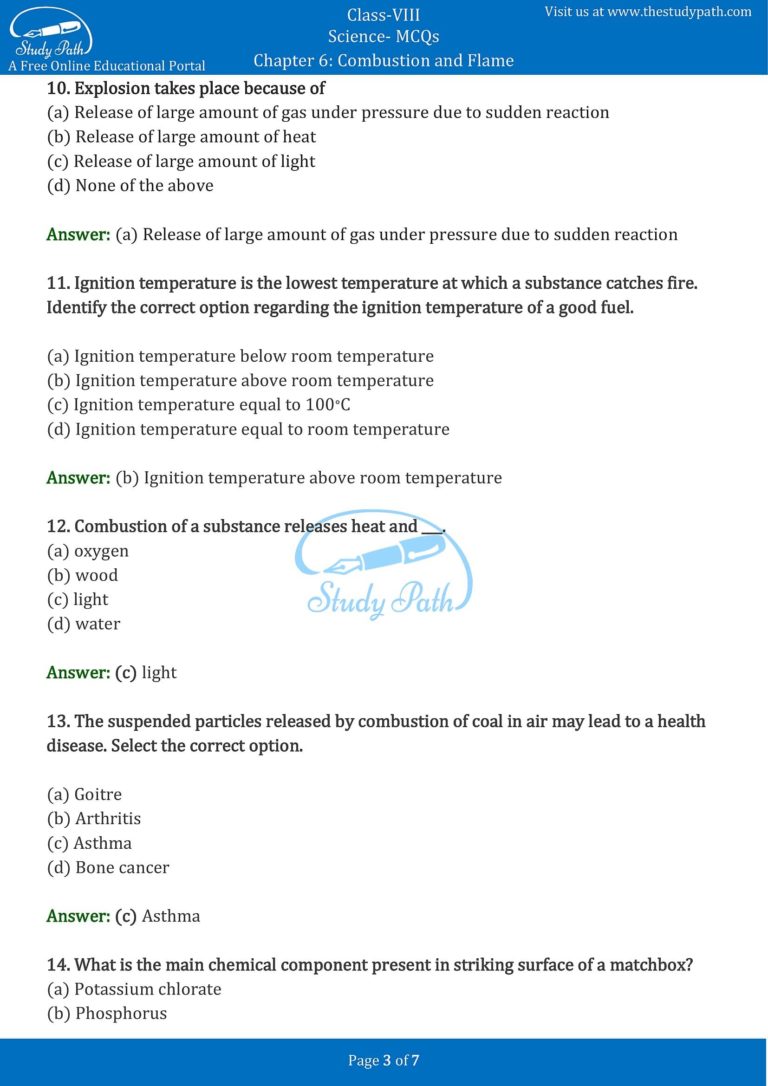
Mcq Questions For Class 8 Science Chapter 3 Synthetic Fibres And Riset
Solving the Chemical Effects of Electric Current Multiple Choice Questions of Class 8 Science Chapter 14 MCQ can be of extreme help as you will be aware of all the concepts. These MCQ Questions on Chemical Effects of Electric Current Class 8 with answers pave for a quick revision of the Chapter thereby helping you to enhance subject knowledge.

Sample Paper Of Class 8 Sst Periodic Test 2 examples papers
Filed Under: Free PDF download of Extra Questions for CBSE Class 8 Science (Physics, Chemistry, and Biology) prepared by expert Science teachers at LearnCBSE.
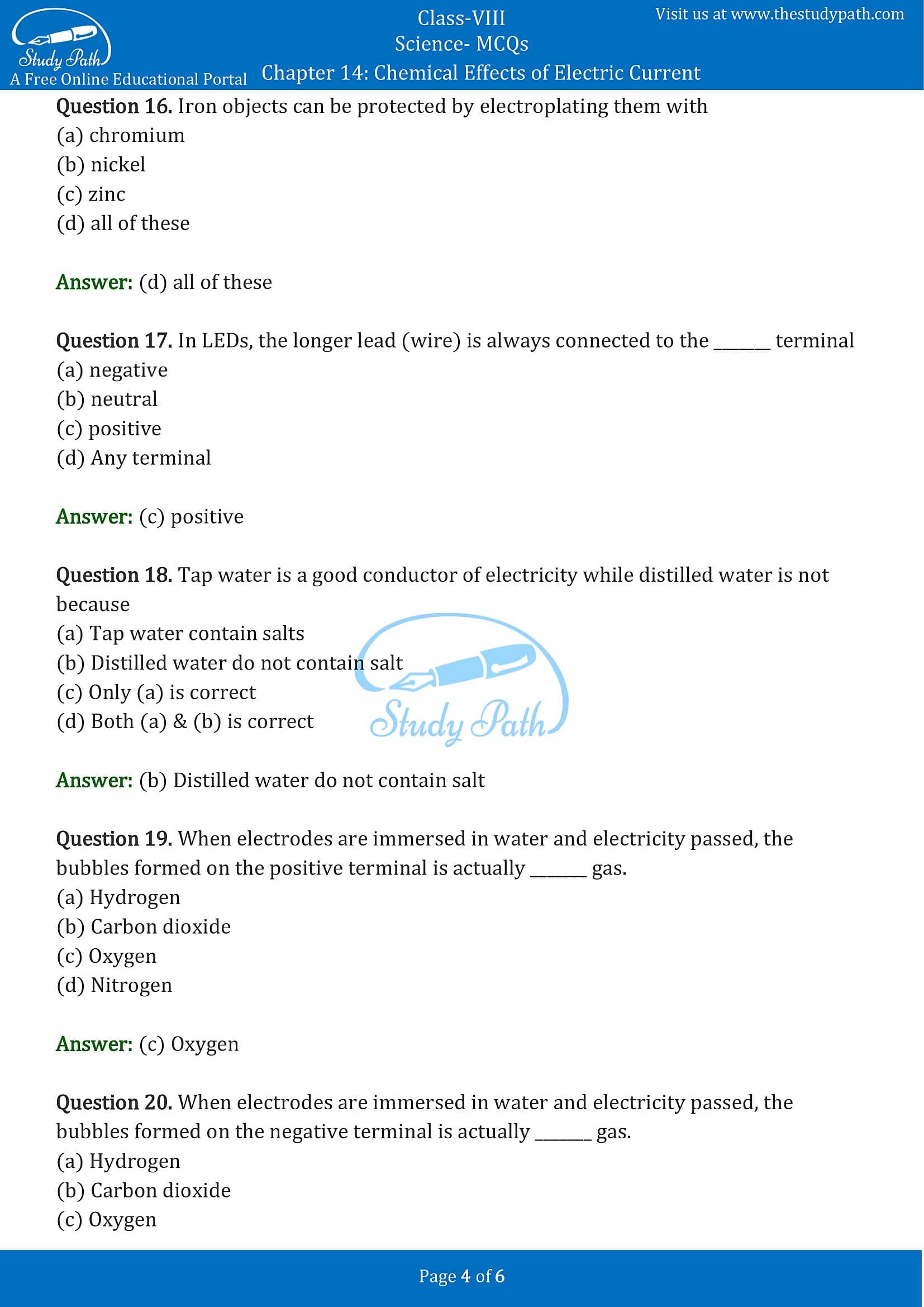
Class 8 Science Chapter 14 Chemical Effects of Electric Current MCQ with Answers
Students can get Important Questions For Class 8 Science Chapter 14 Chemical Effects Of Electric Current here and prepare for their exams more effectively. Visit now & practice these important questions.

NCERT Solutions Class 8 Science Chapter 14 Chemical Effects Of Electric Current (2022)
We have also included all types of questions, i.e. very short answers, short answer and long answers. These questions will cover all the crucial topic, and entire. Chapter 1 Crop Production and Management Class 8 Extra Questions. Chapter 2 Microorganisms: Friend and Foe Class 8 Extra Questions. Chapter 3 Synthetic Fibres and Plastics Class 8.
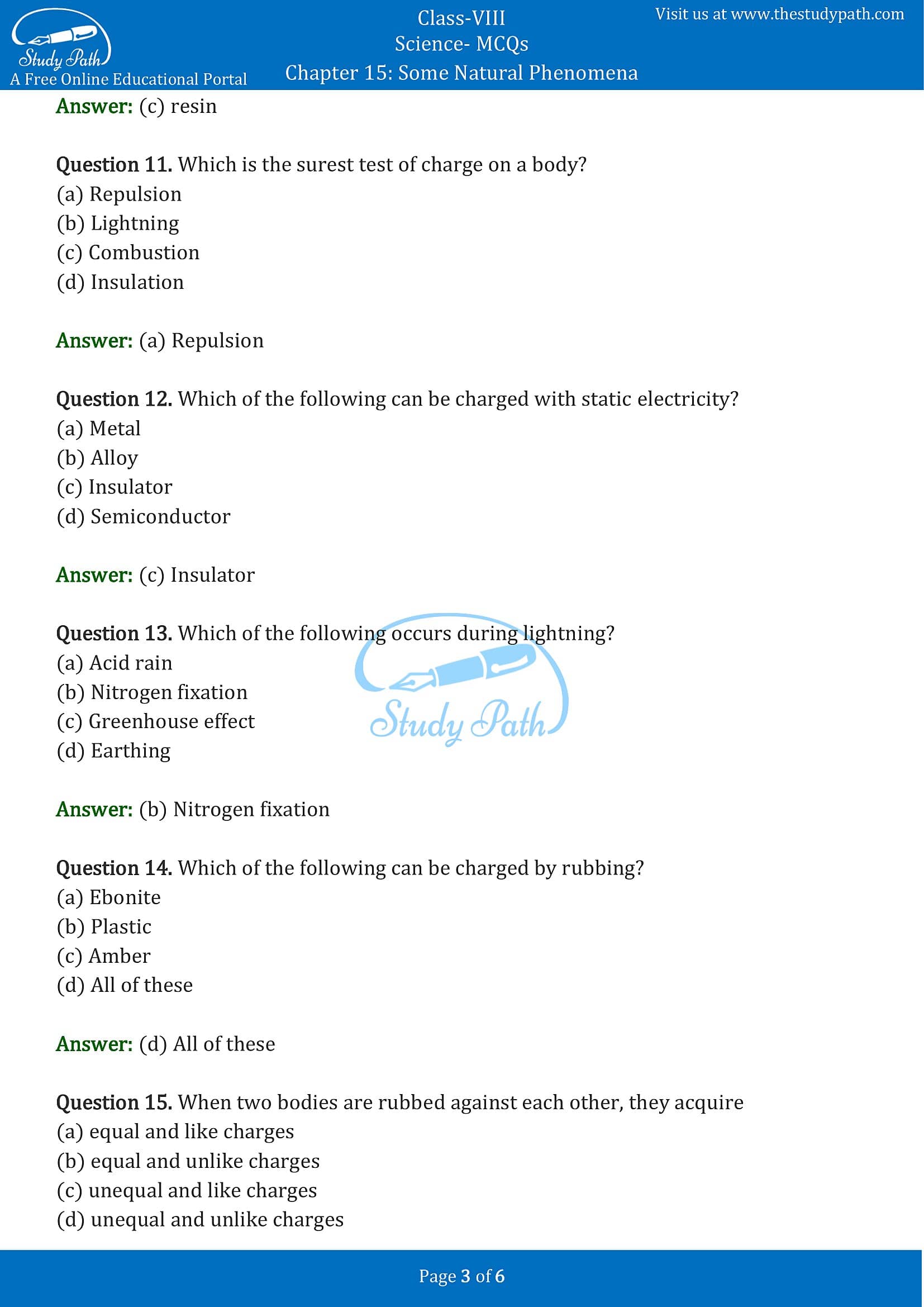
Hot Mcq Based Questions For Class 8 Science Chapter 12 Friction Apsg Maths Extra Vrogue
The important questions for class 8 science chapter 14 will enable students to tackle every concept related to the chapter. For more information and practice, students should download the class 8 science chapter 14 extra questions from the Vedantu website anytime.
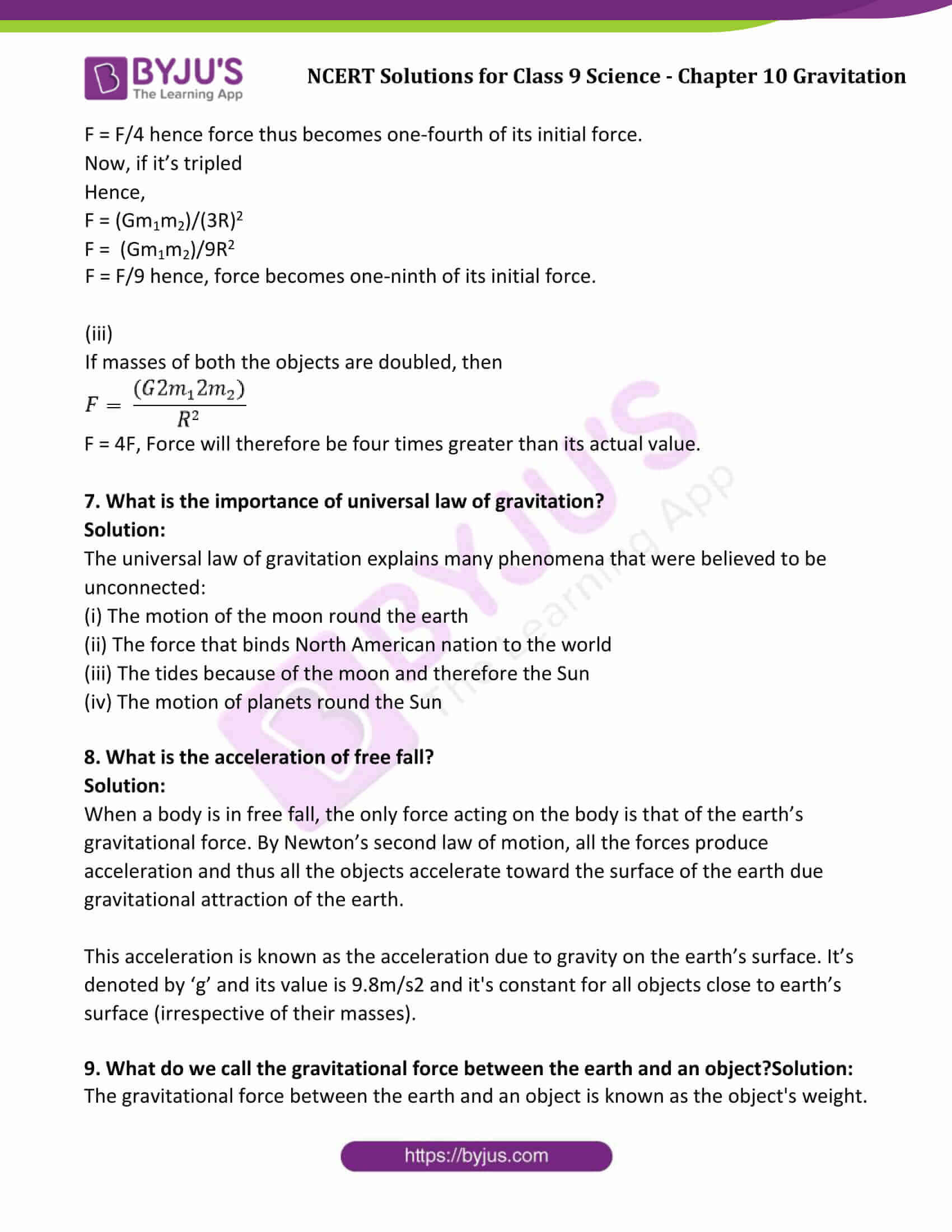
Ncert Solutions For Class 9 Science Chapter 8 Motion Riset
Practice MCQ Questions for Class 8 Science with Answers on a daily basis and score well in exams. Refer to the Chemical Effects of Electric Current Class 8 MCQs Questions with Answers here along with a detailed explanation. Chemical Effects of Electric Current Class 8 MCQs Questions with Answers Choose the correct option. Question 1.

NCERT Solutions for Class 8 Science Chapter 14 Embibe
Answer: Copper Question 3: Do liquids also conduct electricity? Answer: No, some liquids are good conductors of electricity and some are poor conductors. Question 4: Give one example of the chemical effect of electric current. Answer: Bubbles of gases are formed when an electric current is passed through acidified water.
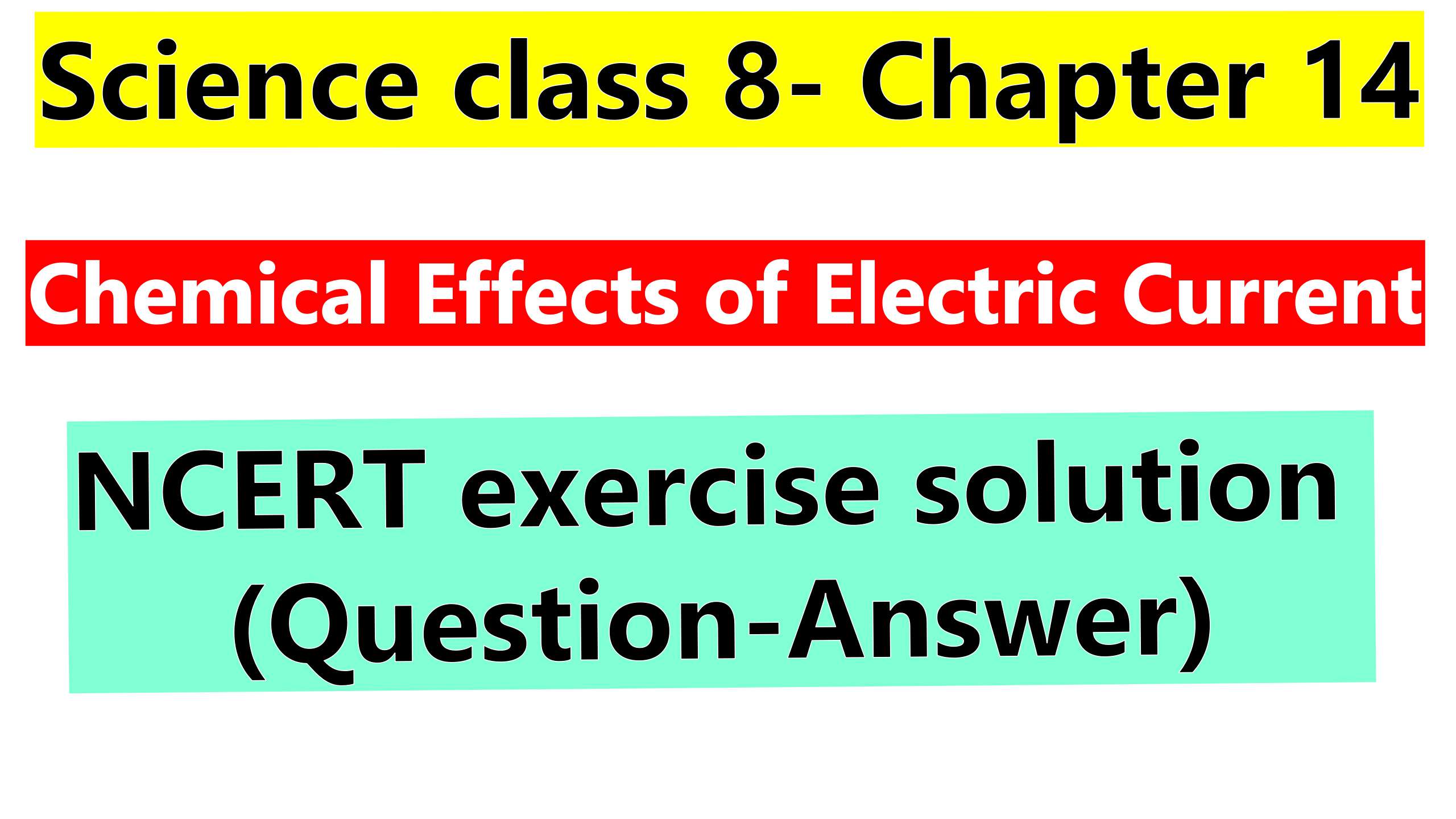
Science class 8 Chapter 14 Chemical Effects of Electric Current NCERT exercise solution
NCERT Science Book Class 8 Extra Questions with Answers is the best choice for you to revise all the concepts during board examinations to score well. We have compiled a list of CBSE Class 8 Science Important Questions and Answers in pdf format for your better exam preparation.

Class 8 Science Chapter 8 Cell Structure And Functions Extra Questions Images
NCERT Solutions for Class 8 Science Chapter 14 Chemical Effects of Electric Current, provide solutions for all the questions given in the NCERT Class 8 Science textbook. The set of solutions presented here is prepared by subject experts to help students in their studies.
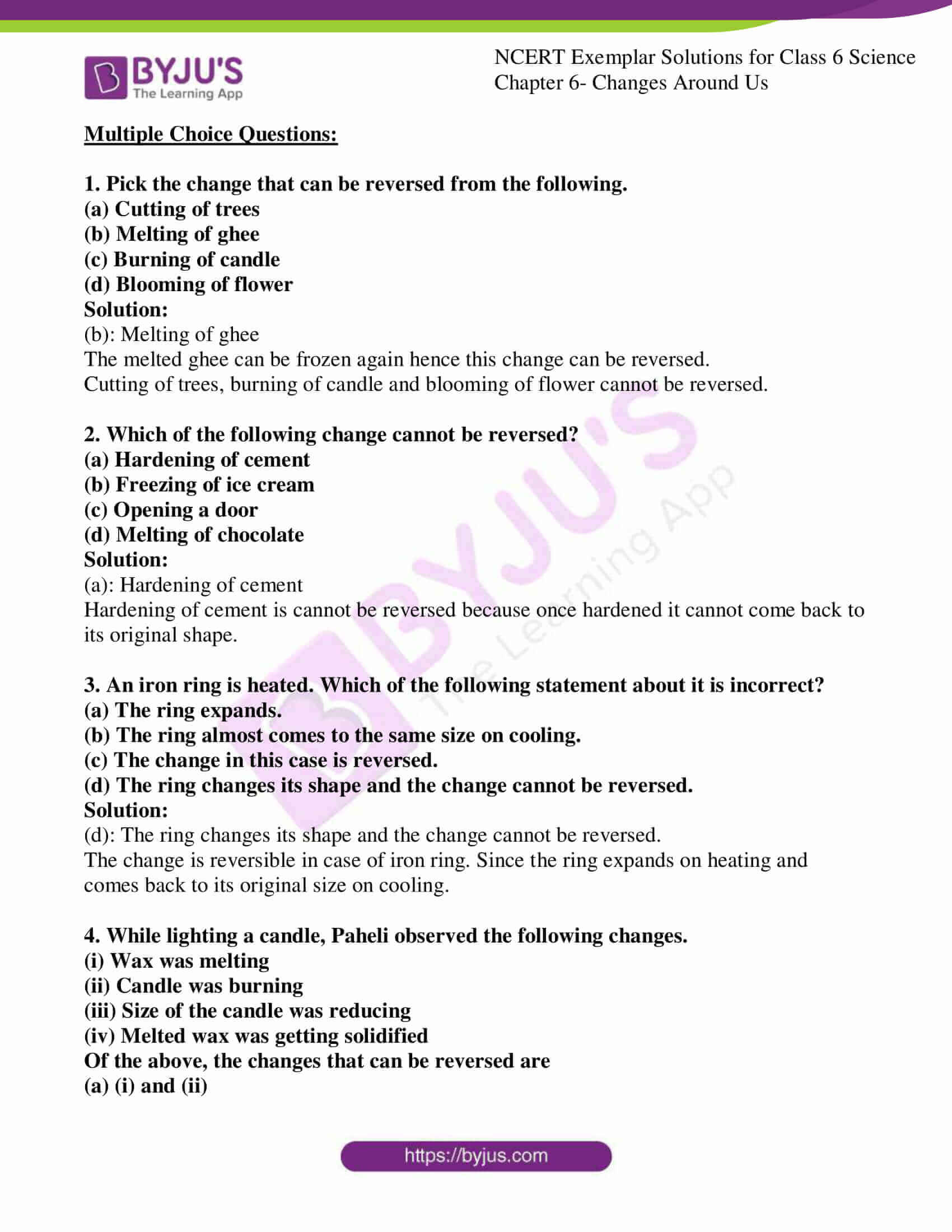
Ncert Solutions For Class 6 Science Chapter 5 Separation Of Substances
Chemical Effects of Electric Current Class 8 Extra Questions Very Short Answer Questions Question 1. What are good conductors? Answer: The substances that conduct electricity through them are called good conductors. Question 2. What are insulators or poor conductors? Answer:
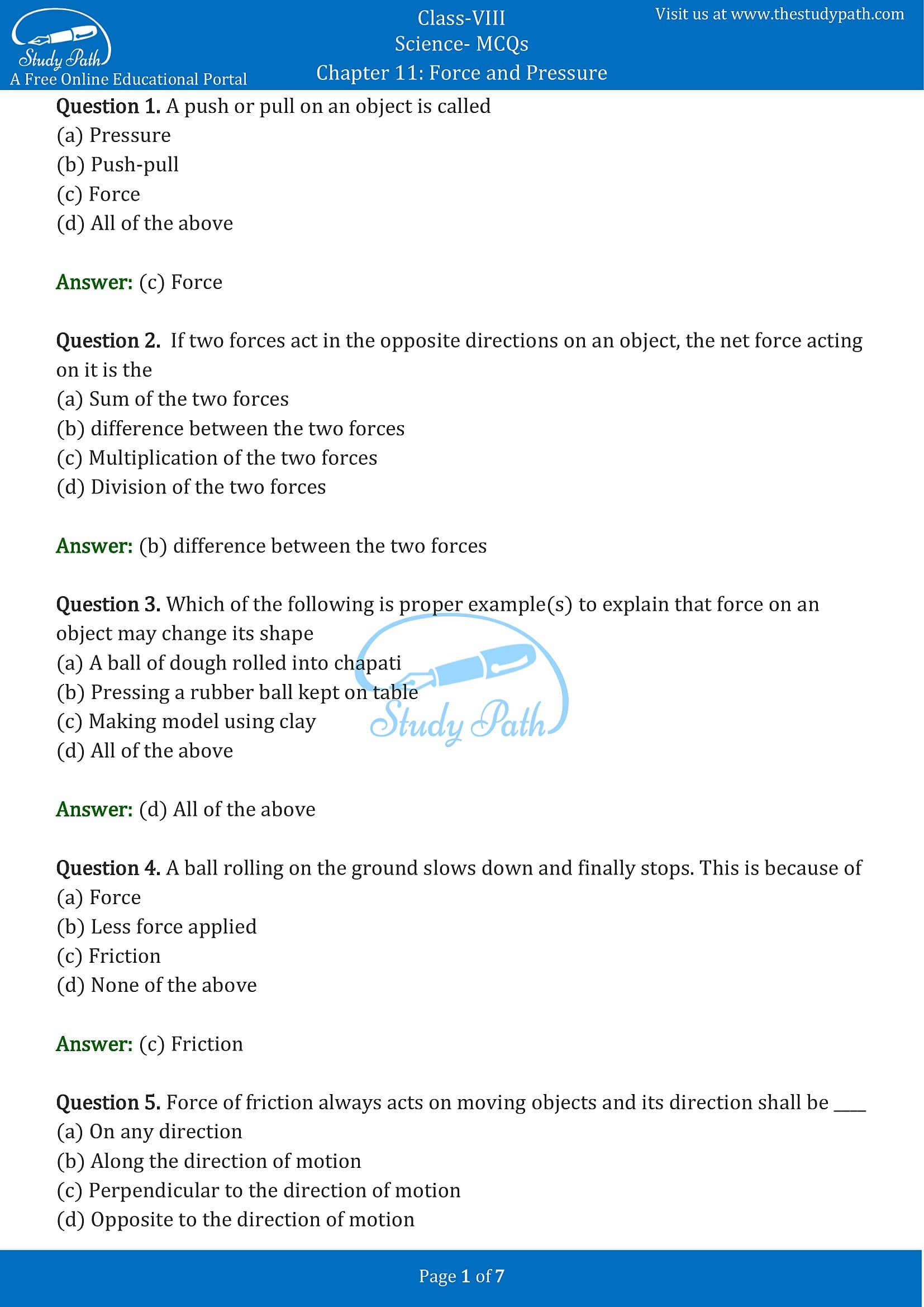
Hot Mcq Based Questions For Class 8 Science Chapter 12 Friction Apsg Maths Extra Vrogue
NCERT Exemplar Solutions for Class 8 Science Chapter 14 - Chemical Effects of Electric Current Soln: On adding another cell current flows through bulb sufficiently to make it glow. 13. Paheli set up an experiment using liquid A in the beaker as shown in Fig. 14.4. She observed that the bulb glows. Then she replaced the liquid A by another.